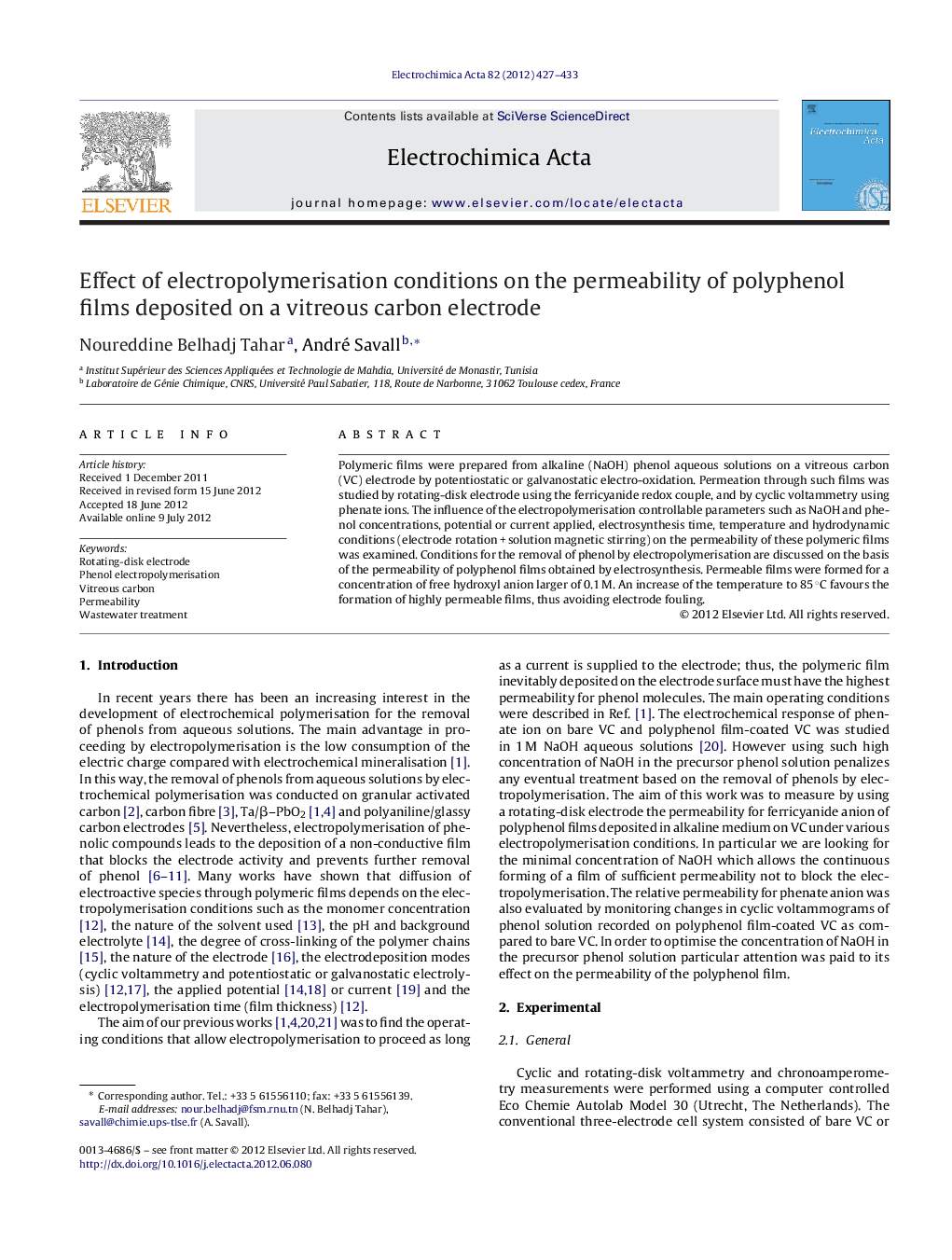| Article ID | Journal | Published Year | Pages | File Type |
|---|---|---|---|---|
| 6618358 | Electrochimica Acta | 2012 | 7 Pages |
Abstract
Polymeric films were prepared from alkaline (NaOH) phenol aqueous solutions on a vitreous carbon (VC) electrode by potentiostatic or galvanostatic electro-oxidation. Permeation through such films was studied by rotating-disk electrode using the ferricyanide redox couple, and by cyclic voltammetry using phenate ions. The influence of the electropolymerisation controllable parameters such as NaOH and phenol concentrations, potential or current applied, electrosynthesis time, temperature and hydrodynamic conditions (electrode rotation + solution magnetic stirring) on the permeability of these polymeric films was examined. Conditions for the removal of phenol by electropolymerisation are discussed on the basis of the permeability of polyphenol films obtained by electrosynthesis. Permeable films were formed for a concentration of free hydroxyl anion larger of 0.1 M. An increase of the temperature to 85 °C favours the formation of highly permeable films, thus avoiding electrode fouling.
Related Topics
Physical Sciences and Engineering
Chemical Engineering
Chemical Engineering (General)
Authors
Noureddine Belhadj Tahar, André Savall,
